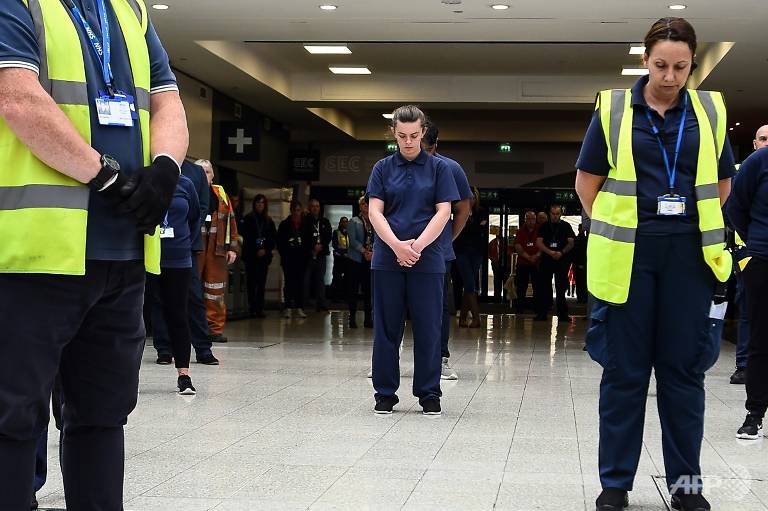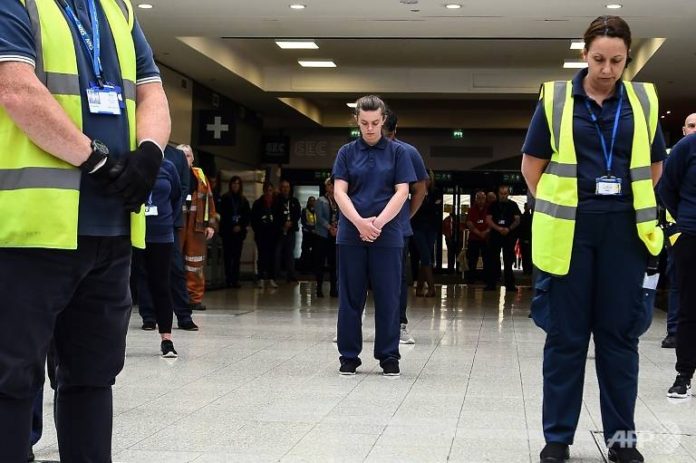SINGAPORE: It was nothing more than a sore throat and cough, symptoms which in ordinary times would be of hardly any concern.
But these are far from ordinary times and the Singaporean doctor knew that he had to self-isolate. After all, he was part of a team treating COVID-19 patients at a hospital in the UK.
“It was very mild the whole time,” said the doctor, who requested not to be named in order to protect the identity of his hospital and patients. “Based on government guidelines … you have to self isolate. And I felt I had to be responsible and stay at home.
“I had been exposed to so many people with coronavirus and it wouldn’t be wise for me to say it is just a normal virus and continue to walk around.”
While he was largely calm – the mildness of his symptoms were a reassuring sign – there were thoughts that would cross his mind during time spent in self isolation.
“You really think: ‘What if I die now? Was my work really useful? Was it truly meaningful in the end? You definitely get worried. It was a big wake up call,” said the doctor.
“I felt I was letting my team down by staying at home, when they might have needed my help. But on the other hand, I would have let my team down if I went to work and infected the ward should I have been infected by COVID-19.”

NHS staff pause for a minute’s silence to honour UK key workers who have died during the coronavirus outbreak AFP/ANDY BUCHANAN
‘THIS WAS MY JOB, MY DUTY’
Since the beginning of the pandemic, there has have been more than 200,000 cases of COVID-19 in the United Kingdom, with more then 30,000 deaths so far.
READ: ‘We didn’t know there was a virus inside of us’: A young couple’s fight against COVID-19
“When the coronavirus first hit, it was chaos … It was a ‘I can’t believe it is here’ situation for a lot of people,” said the doctor. “Some people were quite panicked, they were very stressed, partially due to the lack of protection and the lack of protocol … We were just in the process of creating a ward for COVID-19 patients, (but) it was not really complete yet.”
At that point of time, there was no firm policy on the wearing of masks in his hospital, said the doctor, whose daily duties include normal ward work as well as being on call, which involves seeing new admissions and current patients out of hours.
“It was also taught that not disposing of the mask immediately after working beside a patient would spread the virus,” he said. Staff were told not to wear masks in the common areas of the wards because it would be a strain on resources, recalled the doctor.
The shortage of personal protective equipment has been widely reported among the media in the UK. Last month, Robert Jenrick, the secretary of state for housing, communities and local government secretary said there was a “short supply” in personal protective equipment.
“Supply in some areas, particularly gowns and certain types of masks and aprons, is in short supply at the moment, and that must be an extremely anxious time for people working on the frontline, but they should be assured that we are doing everything we can to correct this issue, and to get them the equipment that they need,” he said in comments reported by local media.
At the doctor’s hospital, staff were initially to wear PPE which includes a surgical mask, a white apron, and gloves at the bedside of suspected and confirmed COVID-19 patients.
“I was thinking that I’m wearing this ridiculous little mask, gloves and apron – that’s almost like what my grandfather wears when he goes out – he wears mask and gloves.” he said.
Days later, the doctor was called to attend to a COVID-19 case. The patient’s oxygen levels were low and was coughing non-stop, he recalled.
“(I just thought) This was my job, my duty. I can’t sit outside and let the patient die. I just had to go in,” the doctor said. The patient needed oxygen, but refused on put on the oxygen mask.
“At first the patient didn’t really want to… but then I asked: Do you know about the virus? The patient said: ‘I don’t want to catch the virus’ and was very afraid of that but still wouldn’t wear the mask,” the doctor added.
“I discussed with a doctor, came back to the patient and said: ‘If you don’t wear a mask, you will die’. The patient eventually put it on.”
COVID-19 wards were eventually set up, as were the segregation of doctors into different teams to treat patients, said the doctor.
In addition to their PPE, doctors now also wear an additional eye-shield when at the bedside of all patients. There has also been increased staffing in the doctor’s hospital.
A HUMBLING EXPERIENCE
Working in the hospital has been stressful for nurses and doctors alike, admitted the doctor.
“When you’re working with coronavirus patients and on the busy side of things, tensions are very high,” the doctor said. “I could see some of my colleagues, like the older colleagues with underlying health problems, they were so worried and anxious. I know a senior doctor who didn’t sleep for three days, having to be busy and preparing.”
But at the same time, staff now sometimes find themselves with more time on their hands, said doctor. This is due to many non emergency procedures being scrapped.
“Suddenly the coronavirus came, it was the first time in months that I could leave at 5 o’clock, because many things are cancelled,” he added. “Lots and lots of surgeries, operations, things like that are all cancelled.”
READ: ‘The hardest thing I’ve been through’: Hallucinations, fever, pneumonia – but finally victory for this COVID-19 patient
But there remain challenges for medical staff on the front line, he added.
For example, testing is still not widely available in his area at the moment, said the doctor. “If you fall sick, you are told to stay at home,” he said. “Testing is only for people who have to be admitted into hospital and they have signs of the coronavirus.”
Due to confidentiality protocols, the doctor also doesn’t know the number of cases in his hospital. “This is a silent virus, its not like when it hits you see a lot of people sick. You just see staff disappearing, they are self-isolating for a period of time then they are back,” he explained.
Having tested negative, the doctor has now returned to work, attending to patients during this tumultuous period. And alongside his colleagues, he will keep going for as long as is required.
BOOKMARK THIS: Our comprehensive coverage of the coronavirus outbreak and its developments
Download our app or subscribe to our Telegram channel for the latest updates on the coronavirus outbreak: https://cna.asia/telegram





